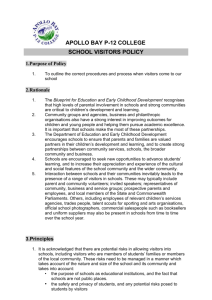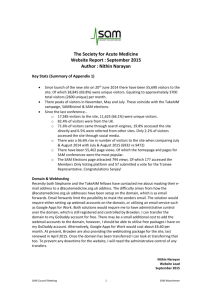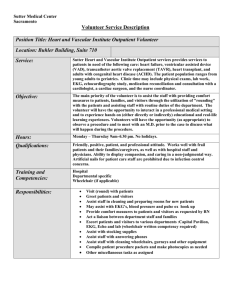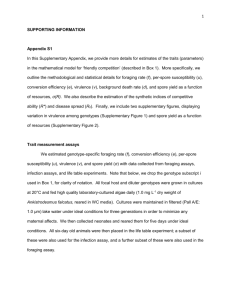See it and Believe it grant guidance
advertisement
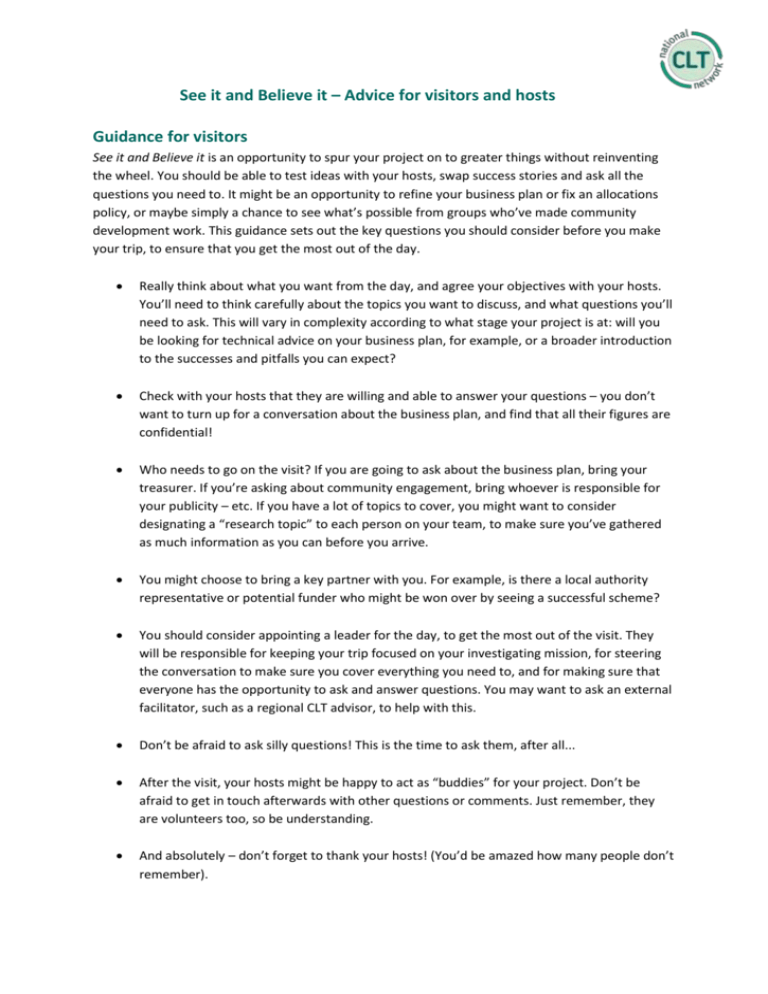
See it and Believe it – Advice for visitors and hosts Guidance for visitors See it and Believe it is an opportunity to spur your project on to greater things without reinventing the wheel. You should be able to test ideas with your hosts, swap success stories and ask all the questions you need to. It might be an opportunity to refine your business plan or fix an allocations policy, or maybe simply a chance to see what’s possible from groups who’ve made community development work. This guidance sets out the key questions you should consider before you make your trip, to ensure that you get the most out of the day. Really think about what you want from the day, and agree your objectives with your hosts. You’ll need to think carefully about the topics you want to discuss, and what questions you’ll need to ask. This will vary in complexity according to what stage your project is at: will you be looking for technical advice on your business plan, for example, or a broader introduction to the successes and pitfalls you can expect? Check with your hosts that they are willing and able to answer your questions – you don’t want to turn up for a conversation about the business plan, and find that all their figures are confidential! Who needs to go on the visit? If you are going to ask about the business plan, bring your treasurer. If you’re asking about community engagement, bring whoever is responsible for your publicity – etc. If you have a lot of topics to cover, you might want to consider designating a “research topic” to each person on your team, to make sure you’ve gathered as much information as you can before you arrive. You might choose to bring a key partner with you. For example, is there a local authority representative or potential funder who might be won over by seeing a successful scheme? You should consider appointing a leader for the day, to get the most out of the visit. They will be responsible for keeping your trip focused on your investigating mission, for steering the conversation to make sure you cover everything you need to, and for making sure that everyone has the opportunity to ask and answer questions. You may want to ask an external facilitator, such as a regional CLT advisor, to help with this. Don’t be afraid to ask silly questions! This is the time to ask them, after all... After the visit, your hosts might be happy to act as “buddies” for your project. Don’t be afraid to get in touch afterwards with other questions or comments. Just remember, they are volunteers too, so be understanding. And absolutely – don’t forget to thank your hosts! (You’d be amazed how many people don’t remember). Guidance for hosts Through See it and Believe it you will be supporting the next generation of community land trusts. This guidance sets out what’s involved and the key points for you to consider, so that your visitors get the most out of their time with you. Your time and expertise have a value – we actively encourage you to charge your visitors a fee for the session. It’s up to you to decide how much to charge. You will probably want to set a day rate and a half-day rate. You might want to vary the fee according to who will lead the session, for example you might want to charge more for your Chair’s time. You might also come to a deal with your visitors, to charge a lower fee in exchange for another service – for example, do they have a solicitor or an accountant whose advice you could borrow in return? If you’re really stuck about setting a rate, contact the Network and we can talk it through with you. What information are you happy to share? Agree this in advance with your visitors – it is to your mutual advantage. For example, don’t agree to share financial information if it is confidential. If you know in advance what will be needed, you might be able to anonymise some sensitive data. Once you’ve agreed with your visitors what topics you will discuss, make sure that they have access to the right people on the day. Of the questions they have agreed with you, who is best placed to give a full answer? After the scheme, we encourage you to “buddy” with your visitors, to answer any follow-up questions they might have, perhaps for an extended period over the course of their project. You don’t have to say yes, and you can change your mind at any time – if you’re not happy for your visitors to contact you afterwards, then tell your visitors directly or let the Network know and we will pass it on.
